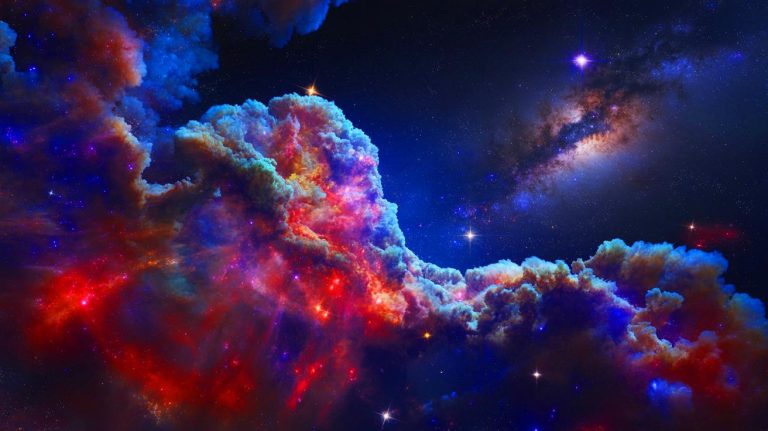| IN A NUTSHELL |
|
Astronomers have made a groundbreaking discovery within our Milky Way galaxy: a colossal molecular cloud known as M4.7-0.8. This immense structure, found approximately 23,000 light-years away, is as massive as 160,000 suns. Unveiled through the use of the Green Bank Telescope, this cloud is situated within a significant region of the galaxy responsible for material transport to its core. This discovery offers valuable insights into the mechanisms of star formation and the broader narrative of galactic evolution. By examining such enormous molecular clouds, astronomers deepen their understanding of the universe’s development across cosmic timescales.
The Role of Giant Molecular Clouds in Star Formation
Giant Molecular Clouds (GMCs) are immense formations of gas and dust, primarily composed of molecular hydrogen. These clouds are often the birthplaces of stars, as they provide the necessary conditions for atoms to coalesce into molecules, eventually resulting in star formation. With masses exceeding 100,000 times that of our sun, GMCs are critical to understanding the processes that lead to the birth of stars and the evolution of galaxies.
The presence of these clouds within galaxies like the Milky Way allows astronomers to study the distribution and properties of GMCs to gain insights into the evolution of galaxies over time. By analyzing these clouds, scientists can piece together how galaxies form and transform, contributing to a comprehensive understanding of the cosmos. The study of GMCs, therefore, plays an essential role in uncovering the life cycle of galaxies.
Exploring the Complexities of M4.7-0.8
The newly discovered molecular cloud, M4.7-0.8, spans nearly 200 light-years and is characterized by a cold dust temperature of around 20 Kelvin (-423.67°F). Within this vast cloud, two prominent structures, the ‘Nexus’ and the ‘Filament,’ have been identified. The Nexus is notable for its bright carbon monoxide emissions, while the Filament displays an elongated shape. These features suggest dynamic processes are at work within the cloud, providing fertile ground for further astrochemical and dynamic studies.
Additionally, the identification of two potential star formation zones, Knot B and Knot E, adds complexity to this celestial structure. Knot E, presenting a comet-like appearance, might represent an evaporating gas globule, though further studies are required to confirm this hypothesis. These elements highlight the intricate and dynamic nature of these stellar nurseries, offering a glimpse into the early stages of star formation and the conditions that lead to the birth of new stars.
Advanced Techniques for Cloud Observation
Astronomers employ radiotelescopes to explore molecular clouds, focusing on the radio waves emitted by gas molecules such as carbon monoxide and ammonia. By analyzing these emissions, researchers can determine the size, mass, and temperature of the clouds, as well as map their internal structures and star-forming regions.
Using multi-wavelength observations is crucial for studying these clouds. By combining data from various instruments, scientists can create a comprehensive image of these massive structures. This approach allows them to understand the physical characteristics and dynamic processes occurring within these cosmic giants, thereby enhancing their knowledge of the universe’s mechanisms and the pivotal role these clouds play in the cosmos.
Implications for Galactic Evolution
The discovery and study of M4.7-0.8 highlight the significant role giant molecular clouds play in the evolution of galaxies. With its unique properties, this cloud offers a rare opportunity to study these processes in detail. Future observations promise to uncover more about the mechanisms of star formation and the lifecycle of galaxies, potentially providing new insights into the universe’s evolution.
Understanding these mechanisms is essential for grasping the broader narrative of galactic evolution. As astronomers continue to explore these enigmatic clouds, the potential for groundbreaking discoveries remains vast. Such studies promise to illuminate the intricate dance of matter and energy that shapes our universe, offering a deeper understanding of the cosmic processes that govern the galaxy’s past and future.
As researchers delve deeper into the mysteries of giant molecular clouds like M4.7-0.8, they stand on the cusp of significant revelations about our galaxy’s history and development. What further secrets might these celestial giants hold, and how could they reshape our comprehension of the cosmos?
Did you like it? 4.4/5 (27)






